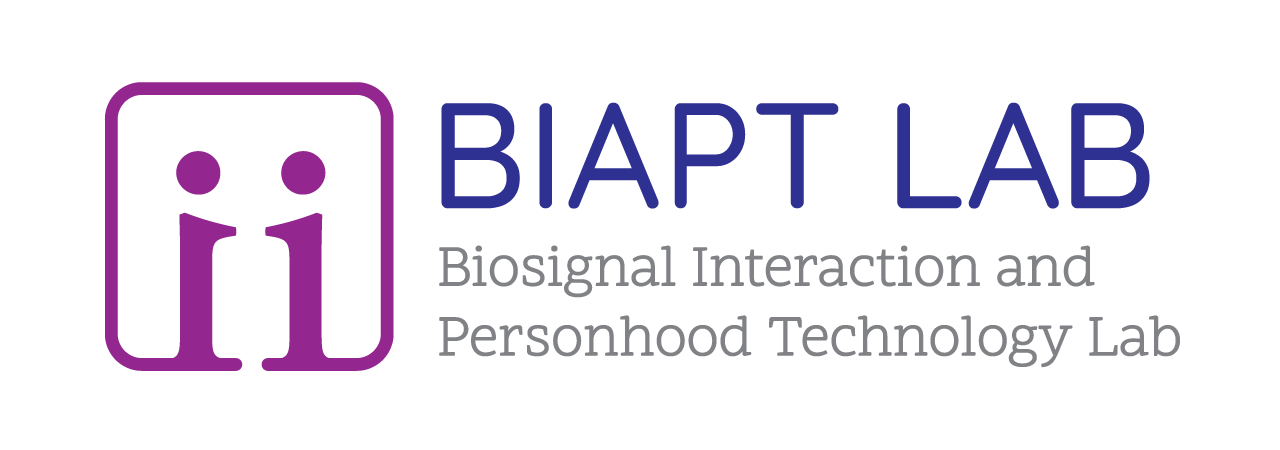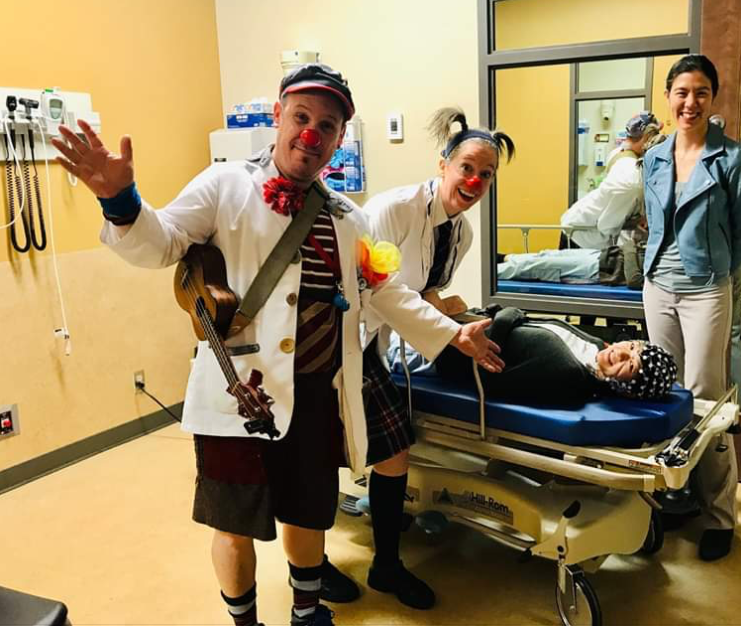Over the past 20 years, improvements in medical life-saving and life-sustaining technologies have created “a new strain of human beings” with minimal to no ability to interact with others. Caring for such individuals requires expertise from health sciences, technology, humanities and the arts, and the integration of deep creativity and innovation in practice. Across the care continuum, those working with unresponsive patients report a high degree of uncertainty and ambiguity in their practice, and high levels of distress and frustration. The crux of this uncertainty hinges on one central question: are these unresponsive individuals conscious or not? In this project, the BIAPT lab is testing the feasibility of a disruptive assemblage called Resonance to detect and augment consciousness in minimally communicative individuals.
Resonance consists of 1) a novel technology that translates brain signals associated with levels of consciousness into sound, and 2) therapeutic clowns, to enable the detection of consciousness. Our interdisciplinary team consists of engineers, therapeutic clowns, human-computer interaction specialists, social scientists and intensive care doctors.
To develop Resonance, we conducted 5 workshops to explore, play with and develop the various technical and artistic threads which comprise Resonance. The technological, sonification, clinical, artistic and multisensory insights resulting from these workshops were used to design and implement the Resonance assemblage.
We are currently actively recruiting patients in a disorder of consciousness to test the feasibility of using Resonance to support interpersonal interactions. The study consists of five visits to the participant’s school or place of residence. In the first visit, a baseline electroencephalogram (EEG) will be recorded to characterize the participant’s brain properties. During the remainder of the visits, a pair of therapeutic clowns will interact with the participant while music is generated from patterns of their brain signals in real-time. Therapeutic clowns have a nimble and adaptable repertoire of techniques (e.g. rhythm, touch, music) to create interpersonal connections with individuals of varying levels of responsiveness. The clowns will pay close attention to the brain-generated music and to any behavioral responses of the participant. As therapeutic clowns have a heightened sensitivity to minimal multisensory feedback, they are ideally placed to assess the impact of this technology on their own responsiveness to the participant, and to suggest ways that it can be used by others to enhance the quality of their interaction.
We anticipate that using Resonance with unresponsive individuals will 1) support hitherto unobtainable interpersonal connections with them, promoting their return to responsiveness; 2) provide critical information for caregiving decisions which depend on an individual’s capacity for consciousness; 3) provide therapeutic clowns with a new medium for interaction with their clients; 4) democratize neuroscientific information by making it accessible to untrained caregivers; and 5) create an entirely new form of interpersonal interaction and connection, perturbing our current conception of consciousness, personhood and citizenship.
This project is funded by an AUDACE grant from the Fonds de Recherche du Quebec, and is currently being led by Charlotte Maschke and Natalia Incio Serra.
If you know an individual who may be a candidate for this study, please contact us directly.
Spin-off Projects
- Assessing the effectiveness of online therapeutic clowning. During the COVID-19 pandemic, our Resonance partner — Dr. Clown — switched from in-person visits to virtual clowning. This was the first time that therapeutic clowning had been attempted on this scale on an online platform, and Dr. Clown was interested in the effectiveness of their interactions. We interviewed therapeutic clowns and caregivers of patients who had received “Nose-to-Nose” online visits to answer this question. We found that although all clowns and caregivers reported challenges and limitations with the medium, virtual therapeutic clowning was effective for empowering clients and forming therapeutic relationships. The clowns successfully used many strategies to maintain their core clowning competencies in a virtual environment. Our study also showed that virtual clowning may be more beneficial for some clients than in-person clowning, and has the potential to extend therapeutic clowning beyond its traditional domains of practice.
- Elder Clowning. Therapeutic clowns are typically associated with pediatric patients, but actually practice across the lifespan. While increasing anecdotal and research evidence converge on the effectiveness of elder clowning, there is limited research on this practice. We are conducting interviews with therapeutic clowns across the world to determine elder clowning practices. In particular, we are interested in how the clowns adapt their practices to the personal, cognitive and cultural needs of their clients.

